Saki Monkey – Thick, Long-Coated Fuzzy Face
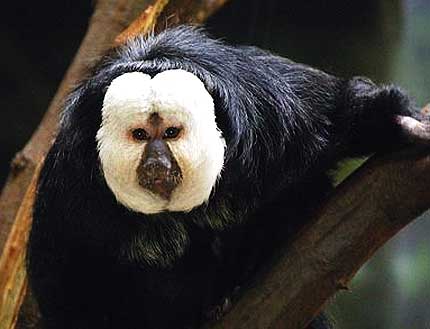
Saki Monkey is a more common name for any primate that is a member of the Pithecia genus. There are 8 saki species in this group and there are also 5 in another genus – Chiropotes or “bearded sakis”. They live all across South America from South Colombia to Central Brazil. They are arboreal and live in the trees of rainforest regions.
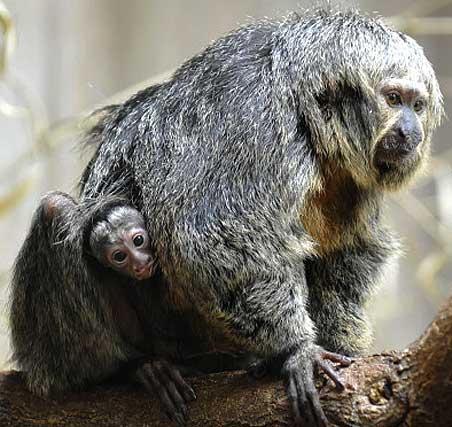
The monkeys are smallish in size and have impressively long bushy tails. They have especially strong hind legs so they can make the huge leaps needed when moving from tree to tree. They can reach up to 20 inches (50 cm) and 4.4 lbs (2 kg) in weight. They have rough furry skin which can be black, grey or reddish depending on the particularly species. This face is often naked with no fur at all but they do all have a furry hood around their faces. The Guianan saki the males and females have vastly different appearances, the male is all black shaggy, long fur with a pale, yellow-orange face and black nose while the female is gray-brown with white-tipped hairs and white stripes on the sides of her nose. The black bearded saki is also of notable appearance with a long reddish-brown coat and what looks like a neatly trimmed, long beard of an Imam.
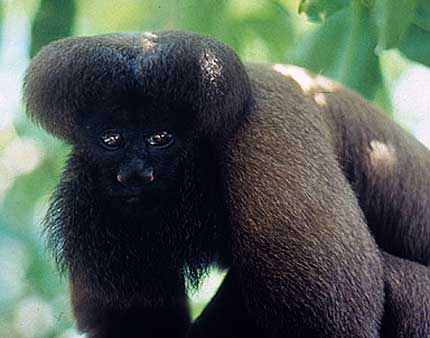
Black-bearded saki
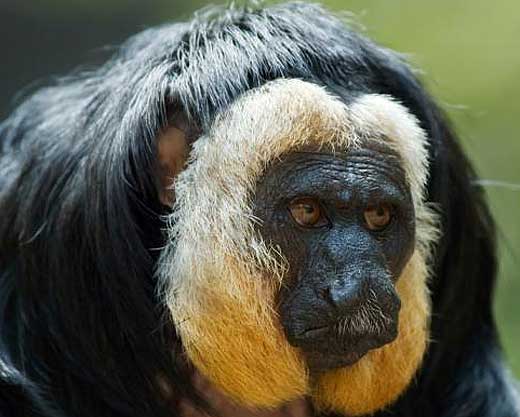
They are diurnal meaning they are active during daylight hours and at rest in the night time. They move mainly on all fours and roll themselves up into a small ball when sleeping. Very rarely will they leave the trees and walk along the ground and very occasionally they run in an upright position on their hind legs. Like many other monkeys, this genus is very shy, cautious and prefers to remain hidden.

Female saki from Brazil
Saki monkeys are omnivorous meaning they’ll eat a range of foods from fruits and nuts to small mammals and insects. Their main diet consists of fruit but they’ll add-in some other foods too. They live in small family groups comprised of a mating pair and their offspring. Usually monogamous, they stay in the same mating pair for their entire lives. They are a very territorial group and are very protective of their homes in the face of other families. They communicate via twittering shrill cries and when they roar, it means they’re warning off other monkeys from their territory.
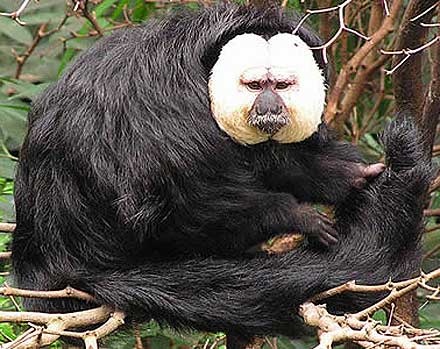
They live up to thirty years and their young are fully mature at about three years old. They mate whenever they feel like it and there is no specific mating period. The gestational period is approximately 150-170 days and they give birth to a single offspring.
